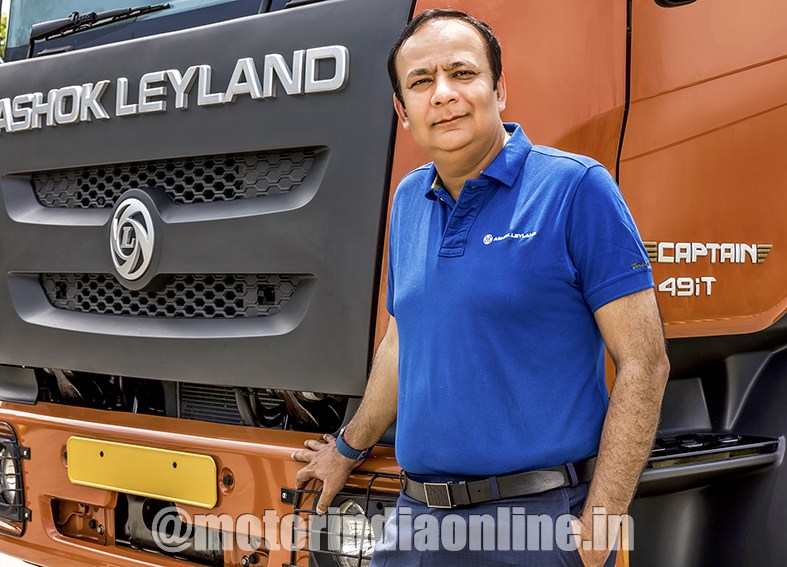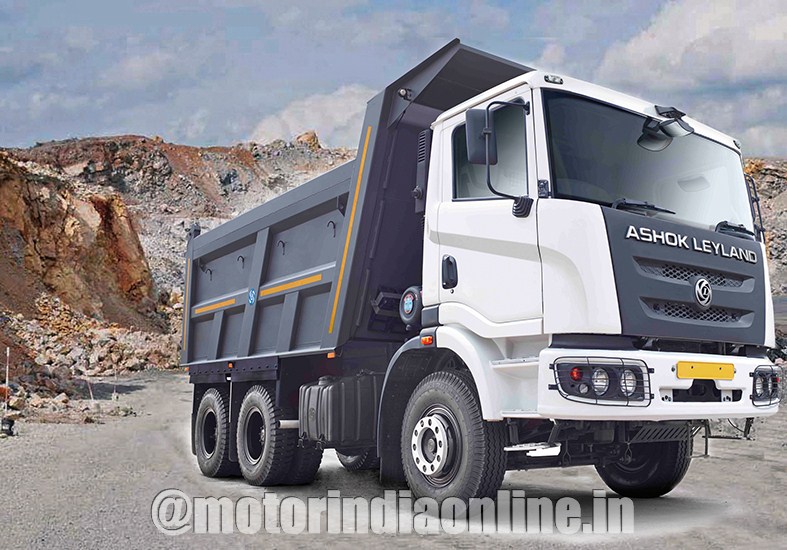“Apart from coal and other mining applications, road construction, earthwork and irrigation are significantly contributing to the expansion of tipper trucks market in the country”. Mr. Anuj Kathuria, President – Global Trucks at Ashok Leyland, talks on the gradual migration of demand towards higher engine power and payload and other aspects relating to tippers in the domestic market.

Excerpts:
How unique is the heavy-duty tipper trucks segment, mining applications in particular, in terms of customer requirements? How are you adapting to the evolving needs of the market?
When it comes to mining, the key customer requirements are uptime, durability and lowest cost of operation. The tippers need to operate over long duty cycles, providing maximum productivity in tough operating conditions. Coal mines are one of the major users of these tippers. However, this application may be accounting for not more than 10 per cent of the total industry volume roughly. Road construction, earthwork and irrigation are the major contributors, and have almost 55-60 per cent share in the tipper segment. Other leading applications would be iron ore, gypsum for cement, and quarries. We have understood this market as a whole and are working on a new offering to compete in all of these applications.
How do you see the tipper segment growing? Can you share us the sales figures of construction tippers and heavy-duty mining tippers in FY 2017-18?
Mainly driven by infrastructure and GDP growth, tippers contribute approximately 25-27 per cent to the TIV, which is up from 20 per cent earlier. Continued focus of the government on infra development would ensure a steady growth in the future. In FY17-18, the total industry volume for tippers was around 61,000. 25T dumpers contributed to around 65 per cent of this volume. Around 2,500 heavy duty or high horse power tippers were sold in FY17-18.
What is the growth and export potential of your tipper products?
In H1, the overall Tipper TIV has grown by more than 90 per cent. This is expected to grow up to 100 per cent in the financial year. Currently we export our tippers to the SAARC countries of Bangladesh, Nepal, Bhutan, and Africa. We are constantly looking out for new markets.
How are tippers in India evolving, particularly after BS-IV and upcoming BS-VI emission regulations? What is in stock for the next-generation mining and construction needs of the country?
Tipper trucks also follow the pan India emission standards. Currently we are in BS-IV era and will be switching over to BS-VI from April 2020. While most of the truck makers opted for SCR technology to meet BS-IV norms, Ashok Leyland was the only manufacturer to introduce iEGR technology, placing customer’s needs above anything else. With no necessity for diesel exhaust fluid, our tippers are best suited to operate in the remote locations, where customers don’t have to worry about AdBlue storage or filling. In terms of new generation mining, the contribution of higher engine hp tippers is bound to increase, with the segment expanding multi-fold. For surface transport, tip trailers are gaining popularity, especially with the recently notified revised axle load norms.
What sort of technological innovation and sophistication are fast catching up in the tipper segment?
The tipper segment is seeing a shift towards higher payload variants. Presently, 35T and 42T GVW tippers have grown to around 15 per cent of the Tipper TIV. The demand for fully suspended, air-conditioned cabins is growing. Our ‘Captain’ range of tippers offer optimum comfort to the driver by offering a fully suspended, air-conditioned cabin with tiltable and telescopic adjustable steering. It also offers an infotainment system with a USB port. While for surface transport, lift axle variants will make an ideal choice, considering they operate with return empty load. However, for construction mining tippers that require good traction in its duty cycle, would be majorly with fixed axles.
What are the customer preferences on digital technologies for mining tippers, particularly in terms of fleet management and telematics solutions?
Our customers always want to monitor their vehicles on a real time basis, not just their location tracking, but also in terms of their health and other vehicle aggregates. In remote locations or on the highway, they also demand prompt service support. While the drivers try to fix the minor issues themselves to make the vehicle on road quickly, the customers seek seamless spares support.
To address each of these customer requirements, Ashok Leyland has introduced an array of industry first digital initiatives, including ‘i-Alert’ to monitor vehicle’s performance in real time. ‘Service Mandi’ to connect the customer or driver to a local mechanic. ‘E – Diagnostics’ to helps the driver to diagnose and fix the issues seamlessly using a simple in-house developed app, and 24×7 online spares shop ‘Leykart’.
How do you create brand awareness and reach out to the customer in the mining segment? How do you rate your aftermarket thrust?
We have 46 area offices and 19 regional offices across India. There is a customer touch point every 50 km, with 2600 plus touch points across the country. Our team is in constant touch with the customers on a regular basis, and they keep them updated about the latest offerings and the product range. We use social media also to create awareness about our entire product range that includes tippers as well.
In addition, we reach out to the driver fraternity to improve customer connect by conducting multiple unique activities to maximize our reach in the market. One such activity is called the ‘DEEP’ – Driver Engagement and Education program, where we reach out to drivers using our ‘KNOW’ – Knowledge on Wheel vehicle, and train them on the BS-IV technology.
